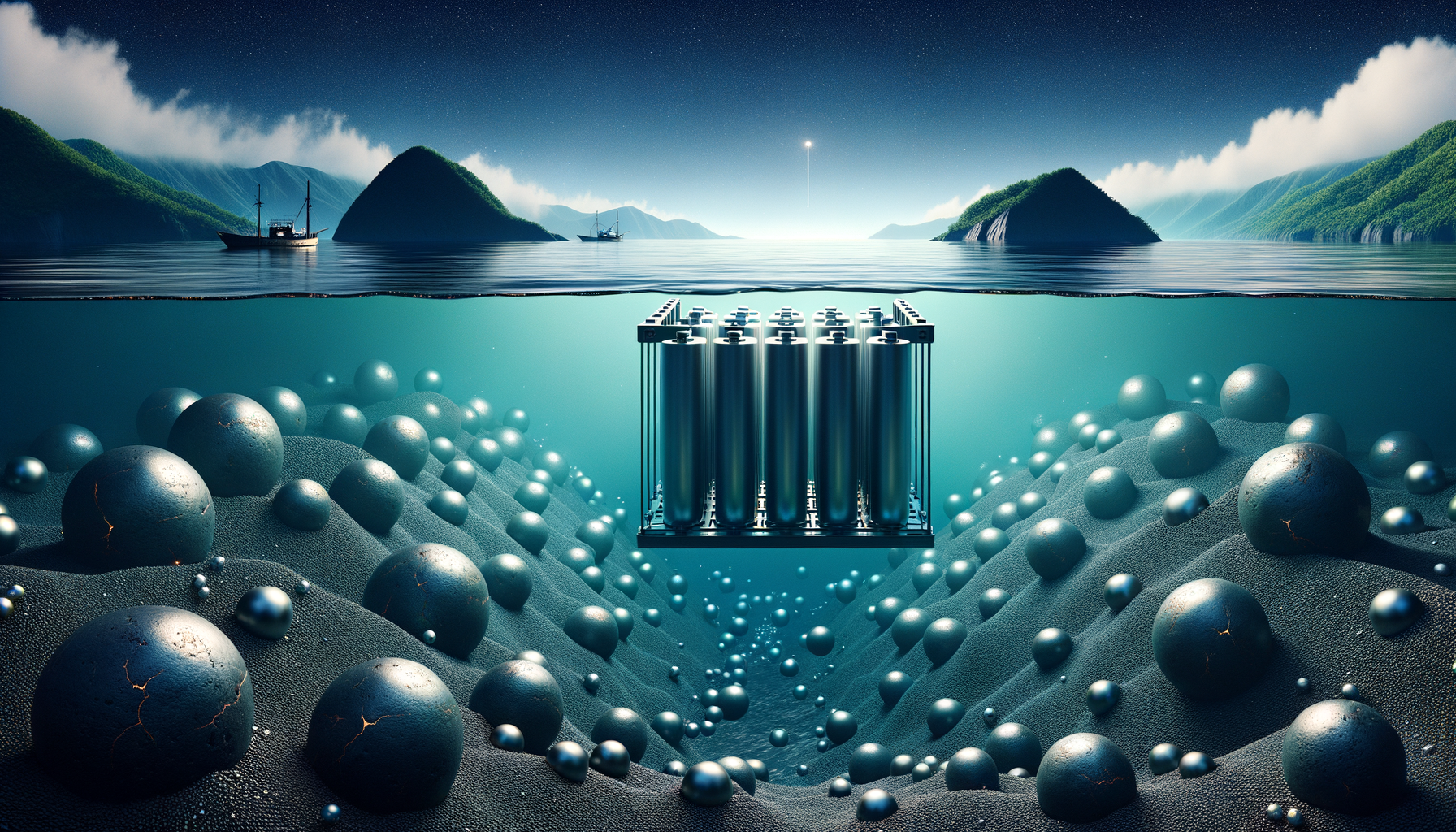Will a New Battery Kill Japan’s $26-Billion Seabed Mine?
Short answer: Not yet. A cobalt- and nickel-free battery is real, but still experimental, and Japan’s deep-sea project is only at the pilot stage. The treasure is safe for now—but the clock is ticking.
The Plot Twist Buried 1,200 Miles Under the Pacific
In June 2024 Japanese researchers announced a stunning find: manganese nodules near the tiny island of Minami-Tori-shima containing roughly 610,000 t of cobalt and 740,000 t of nickel—together valued at about $26 billion. Tokyo suddenly appeared to hold a trump card in the global battery race.
Then, barely a year later, scientists at McGill University splashed cold water on the idea. They unveiled a disordered rock-salt (DRX) cathode that works without any cobalt or nickel at all. Headlines leapt to a dramatic conclusion: “Breakthrough battery could derail Japan’s $26 billion mining plans.”
Our fact-check shows a more nuanced—and far more interesting—story.
1. Treasure Hunt or Trial Balloon?
What’s verified
- Size & location: 1,900 km (≈1,181 mi) southeast of Tokyo, worth ≈$26 billion.
- Ambition: University of Tokyo geologist Yasuhiro Kato says the goal is 3 million t of nodules per year.
What’s still tentative
- Timeline: Government documents speak of “trial mining” in 2025 and “experimental extraction” by March 2026, not full-scale production.
- Commercial hurdles: Deep-sea robots, lifting pipes and on-ship processing remain prototypes.
Put simply: Japan has found a fortune, but hasn’t yet built the vault.
2. The DRX Battery—Genuine Breakthrough, Limited Mileage
McGill, working with Stanford/SLAC and KAIST, published a July 2025 paper showing that molten-salt synthesis can mass-produce DRX particles. Early cells kept ~85 % of their capacity after 100 charge cycles—impressive for DRX, but still behind today’s market-ready NMC or LFP batteries.
Why It Matters
- Cuts out cobalt and nickel—the metals Japan hopes to mine.
- Potentially cheaper and greener than current cathodes.
- Not yet “drop-in” ready for a 10-year, 1,000-cycle electric car.
In short, the tech is promising, not proven.
3. Hype vs. Hard Numbers
| Claim | Fact-check result |
|---|---|
| DRX “eliminates the need” for cobalt/nickel today | △ Needs nuance. Eliminates them in the lab, not yet in mass-market EVs. |
| DRX will render deep-sea mining “economically unviable” | ✗ Speculative. No peer-reviewed cost analysis exists. |
| Japan will begin “large-scale mining by 2026” | △ Optimistic. Only pilot tests are scheduled. |
The take-away: DRX may erode future demand but cannot erase cobalt and nickel overnight. Meanwhile, high-range EVs still lean on nickel-rich chemistries, and cobalt demand is forecast to grow through 2030.
4. The Ecology Card—Correcting the Record
The original article cited a “43 % drop in fish and shrimp” after tests at Minami-Tori-shima. The real study:
- Occurred on the Takuyo-Daigo seamount, 600 km away.
- Measured a 43 % decline one year after a two-hour disturbance of cobalt-rich crust, not nodules.
That still alarms marine biologists, but the effect hasn’t been documented at Minami-Tori-shima—because no one has mined there yet.
5. The Race Japan Is Really In
Japan’s dilemma now looks less like “dig or don’t dig” and more like “dig fast enough to pay off before battery science sidelines you.”
Two clocks are ticking:
- Technological: If DRX or other cobalt-free chemistries (LFP, sodium-ion, LMFP) reach true commercial parity, cobalt prices could slide.
- Regulatory & Public: The longer Japan tests, the louder environmental opposition may grow—especially after the mining moratorium debate inside the International Seabed Authority.
6. What to Watch Next
- 2025–26: Japan’s trial lift of nodules—proof-of-concept for the engineering, a magnet for activists’ cameras.
- 2026-28: DRX and rival chemistries in pilot EV fleets. Early wins or stumbles will sway investors.
- Commodity markets: If nickel or cobalt prices climb on demand from high-range EVs, seabed mining looks attractive; if prices sag, financiers may balk.
- International policy: A global moratorium on deep-sea mining is still on negotiating tables.
The Bottom Line
Japan’s $26-billion cache is neither guaranteed riches nor doomed folly—it is a high-stakes gamble on timing. The DRX breakthrough shifts the odds but doesn’t call the game.
For now, the nodules stay put, the lab batteries stay in the lab, and the race between shovel and silicon is very much alive.
Sources
- Nippon Foundation / University of Tokyo survey (June 2024) – Tribune Pakistan
- Kyodo News (June 2024) – mining timeline
- McGill University press release (July 2025) – DRX breakthrough
- Science Focus (2020) – Takuyo-Daigo disturbance study
(All links accessible at time of publication.)
Verified facts are shown in bold; speculative statements are flagged. If you spot discrepancies, drop us a line—investigations thrive on sharp eyes and healthy skepticism.
